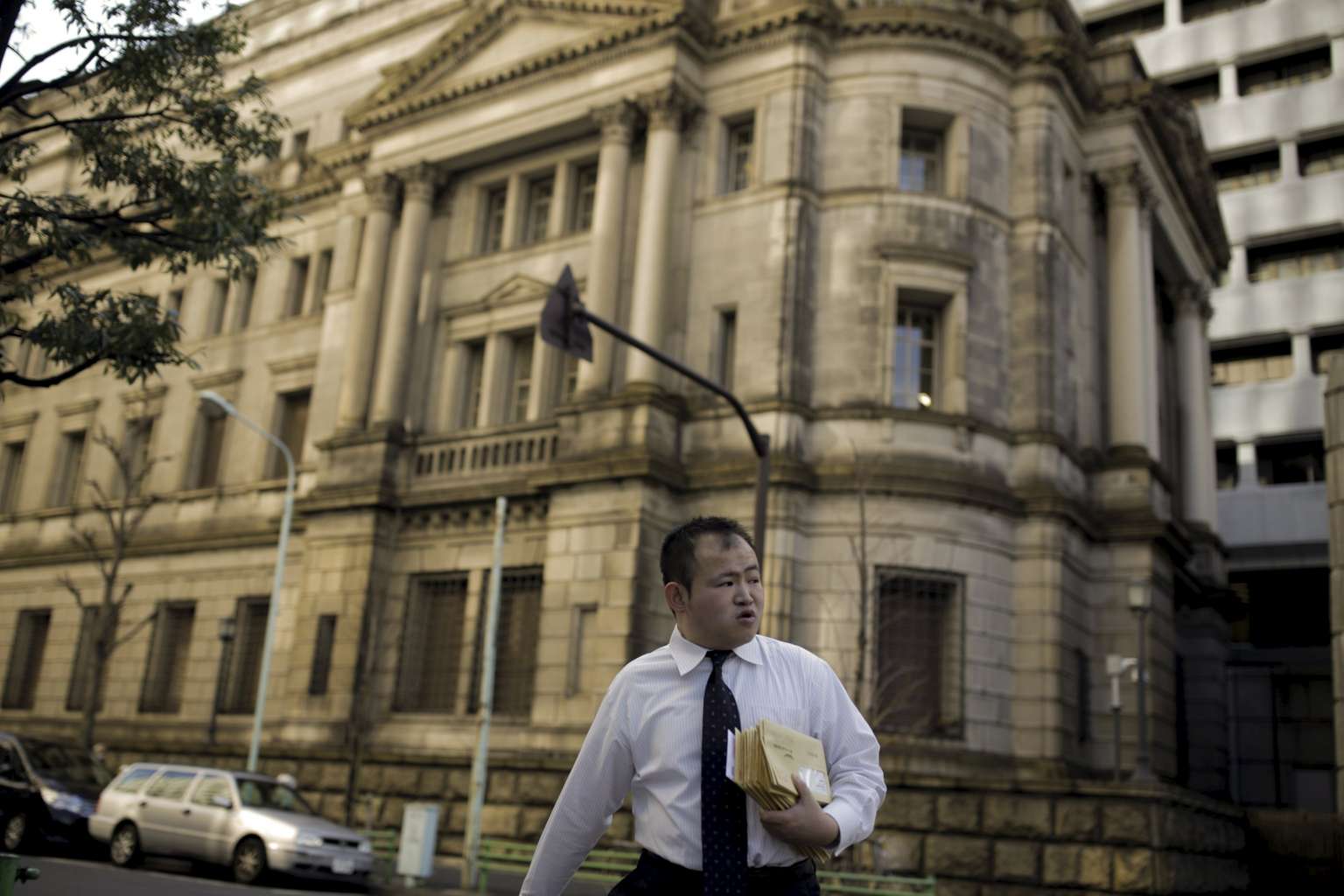Race to bottom making currencies more volatile while not boosting inflation, warn traders
Sign up now: Get ST's newsletters delivered to your inbox

A man crosses a street outside the headquarters of the Bank of Japan in Tokyo, Japan, on Feb 16, 2016.
PHOTO: REUTERS
Follow topic:
LONDON/NEW YORK (BLOOMBERG) - Foreign-exchange traders are growing increasingly exasperated with central banks.
Incessant shifts in monetary policy around the world are frustrating participants in the US$5.3-trillion-a-day market because they have the side-effect of whipping up exchange-rate volatility. Worse, the attempts to rekindle inflation with lower interest rates - which typically weaken currencies - are also growing more futile, they contend.
JPMorgan Chase & Co's Global FX Volatility Index reached the highest since 2012 last month on a closing basis. And yet currency speculators were unable to take full advantage, with the Parker Global Currency Manager Index showing 2016 to be the second-worst start to a year in the past five.
What's more, with Chinese growth slowing and causing a slump in oil and commodities prices, weaker exchange rates no longer readily translate to the increase in consumer prices most rich-world central banks use to benchmark their economies. A group of 16 major currencies fell an average 21 per cent against the US dollar since the end of 2012, yet inflation in developed economies slowed to 0.4 per cent from 2.1 per cent in that period.
It's leading some investors to question central banks' entire inflation-targeting regime.
"This competitive devaluation and the policy behind it are completely futile," said Stephen Jen, the London-based co- founder of hedge fund SLJ Macro Partners and a former International Monetary Fund economist. "There's no evidence that it's working and it's doing more harm than good to global financial markets."
The Bank of Japan surprised the market in January by announcing it would adopt negative interest rates. Yet, the yen has strengthened about 5 per cent against the US dollar since and two-year inflation expectation as measured by consumer-price swaps has dropped to the lowest since October 2014.
The JPMorgan global currency volatility index touched 12.5 per cent in February, the highest since 2012, and has risen from as low last year as 8.8 per cent. It has averaged 9.5 per cent over the past five years.
Now currency dealers are gearing up for Thursday's policy decision from the European Central Bank. A 10 basis-point cut to a minus 0.4 per cent deposit rate is fully priced inby swaps traders and nearly three-fourths of economists surveyed by Bloomberg predict it will also expand its monthly bond purchases after inflation in the euro-area fell in February at an annual rate of 0.2 per cent.
A race to the bottom on interest rates is making currency markets more volatile, according to Jason Leinwand, a New York-based managing director at Riverside Risk Advisors.
He recommends selling the yen on the prospect of more monetary easing because, he said, the Bank of Japan "won't stand for" an exchange rate much stronger than 110 yen per dollar, compared with about 112.5 yen in New York on Wednesday.
"Currency volatility is not going to come down," Mr Leinwand said. "There will be more pressure on currencies from the shorter-term investor, which are the ones moving the market now."
Unsettled by the price swings, foreign-exchange traders are now starting to question whether all this central bank action is worthwhile - and even whether policy makers need to retain their inflation targets in the current environment - particularly if their actions snowball into competitive devaluations referred to as a currency war.
From the US to Japan, and Switzerland to Sweden, more than 20 mostly developed economies have cut rates or taken other measures to ease policy since the start of last year - moves that should stoke growth and inflation by expanding the supply of money. Many of these economies target annual price growth of about 2 per cent.
"The question then is whether the latest undershoot in prices is only cyclical or structural," said Valentin Marinov, head of Group-of-10 currency strategy at Credit Agricole's corporate and investment bank unit. "Central banks are trying to trigger a sharp currency depreciation and then do what they can to sustain that weakness, hoping it will filter into higher inflation. The inflation target is central to the currency wars."
Inflation targeting was first implemented by the Reserve Bank of New Zealand in 1990, according to the International Monetary Fund. It was adopted in the 1990s by Australia, Canada, Sweden and the UK. The euro area followed, with Ben Bernanke's Federal Reserve setting a price-growth target for the first time in 2012. And there's little evidence that policy makers in developed economies are preparing to extricate themselves from those targets, or the policies intended to help achieve them.
A currency war is a high price to pay for the promise of faster inflation at some point in the future, said Scott Mather, managing director at Pacific Investment Management Co.
"One of the designs of the negative-rate policy, and central banks have sort of admitted it, is that the primary channel it works is through the exchange-rate channel," Mr Mather said. "Sometimes the cure can be worse than the disease."

